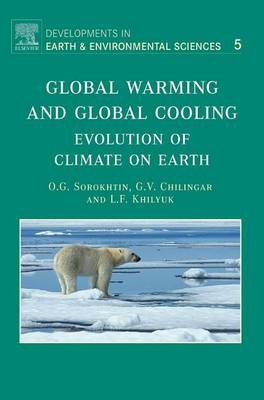Developments in Earth & Environmental Sciences
2 primary works
Book 5
Global Warming and Global Cooling
by O G Sorokhtin, G. V. Chilingar, and Leonid F Khilyuk
Published 1 January 2007
The theory of the Earth's climate evolution based on universal chemical-physical laws of matter-energy transformation is presented in the book. It shows how the process of Earth's core separation has led to formation and evolution of the hydrosphere and atmosphere. Having analyzed the processes of heat transfer in the atmosphere, the writers developed the adiabatic theory of the greenhouse effect, which was applied for analysis of climatic changes on the Earth. The influence of changes in climate on formation of mineral deposits and development of life on Earth was considered and presented based on modeling of typical climatic regimes. It shows that the anthropogenic effect on the Earth's global temperature is negligible in comparison with the effect of global forces of nature.
Book 10
Evolution of Earth and Its Climate
by O G Sorokhtin, G V Chilingarian, and N O Sorokhtin
Published 1 January 2010
The book reviews the current physical theory of Earth's global evolution, its origin, structure and composition, the process of Earth's core formation, Earth's energy, and the nature of its tectonomagnetic activity. The book also deals with the origin of the Moon and its influence on our planet's evolution. Based on the integral positions of this theory, the book analyzes the issues of the origin of the hydrosphere and atmosphere, and the conception and evolution of life on Earth. The monograph also reviews the adiabatic theory of the greenhouse effect developed by the authors, and the effects of nitrogen-consuminging bacteria and of periodic changes in the precession angle on its climate. In particular, these effects cause the onset and periodicity of ice ages and a significant climate warming during the periods of supercontinent appearance (like Pangaea in the Mid-Mesozoic).

